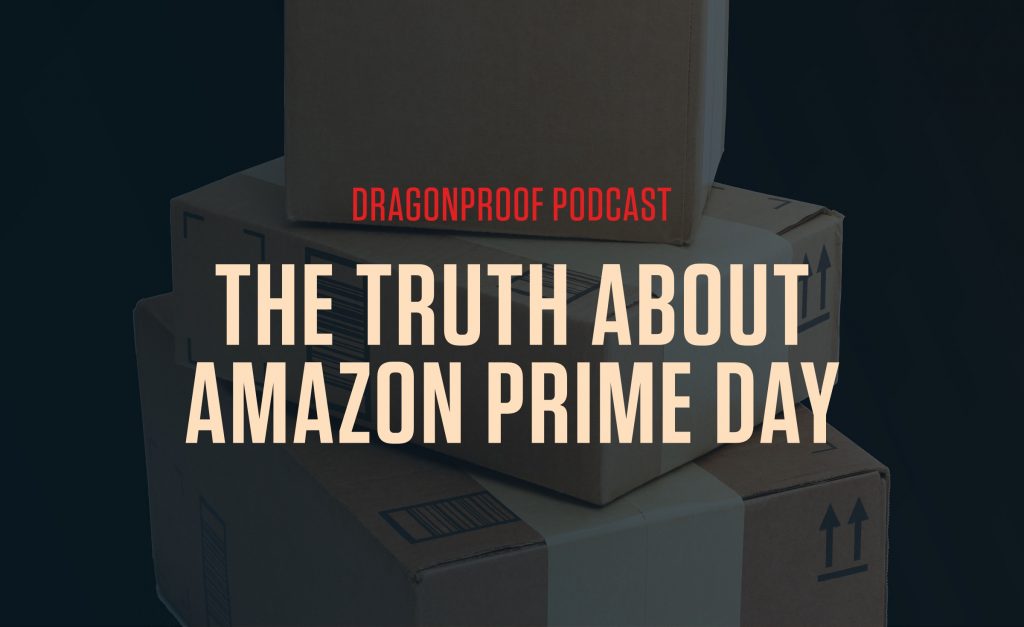By Miva | June 15, 2021

See why top ecommerce brands use Miva’s no-code platform to run
multiple stores, manage massive catalogs, and grow their revenue.
The majority of coverage around Amazon Prime Day positions the annual sales event as a cultural event and retail free-for-all, which shoppers and sellers must patronize at any cost. But as Rick Wilson argues on the new Dragonproof Podcast, Prime Day does not fundamentally exist to offer deals, or to generate revenue for third-party sellers. Results from the past many years suggest that the sale has only these 3 goals:
Remarkably, Amazon’s revenue from Prime Day in 2020 “only” amounted to about 10 billion dollars. While this is a huge 45% lift from 2019, it still must be viewed in context—Amazon’s total retail income for the year was 386 billion. That means that Prime Day accounts for less than an average day’s receipts—so the massive marketing push around it must be for goals other than just product sales.
If Prime Day’s main motive is to add Prime subscribers, then earning money for TPS is much further down the list, and Amazon’s policies will be set accordingly. This is dangerous for sellers, short-term and long-term. During the sale itself, Amazon will prioritize its own products first, and use time pressure and “doorbuster” deals on already inexpensive products in order to create an exciting Black Friday atmosphere for consumers. This leaves no room for shoppers to form any kind of relationship with seller brands, and burns discretionary income on quick impulse purchases. If the goal of acquiring more Prime subscribers is achieved, that means greater competition for independent ecommerce sellers in the future, and more difficulty for those sellers to achieve margin.
Despite these factors, Prime Day still represents an opportunity for independent sellers, both on and off the Amazon platform. Media coverage of the event over many years has created an audience which now expects discounts at this time of year, and not just at Amazon. Web traffic to the top 100 sites increased overall on Prime Day last year, suggesting that buyers are logging on for a deal and will leave Amazon to find it. So whether sellers want to tap into Amazon’s on-site traffic, or just throw a coordinated sale event elsewhere, there are many transactions to be had.
Here are some questions and techniques for sellers to consider when jumping into the event, or any sale at this time:
Every retailer will have different takes on these approaches. In any case, by transforming Prime Day into a massive pop culture event, Amazon has inadvertently gifted all independent sellers with a great opportunity. The expectations of the public have been stoked and they are ready to find a deal. By understanding the true motivations and limitations of the Amazon event, sellers can attract that business and leverage Prime Day effectively.
To hear Rick’s full analysis of Amazon Prime Day, stream the new Dragonproof Podcast here.
Back to topNo worries, download the PDF version now and enjoy your reading later...
Download PDF Miva
Miva
Miva offers a flexible and adaptable ecommerce platform that evolves with businesses and allows them to drive sales, maximize average order value, cut overhead costs, and increase revenue. Miva has been helping businesses realize their ecommerce potential for over 20 years and empowering retail, wholesale, and direct-to-consumer sellers across all industries to transform their business through ecommerce.
Visit Website